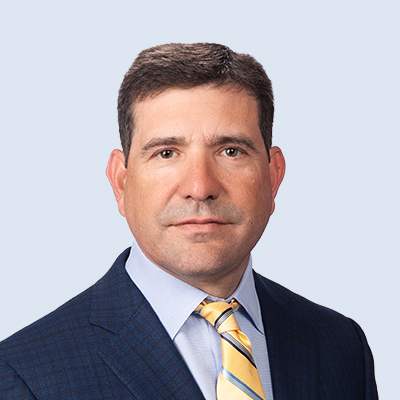Jeff Danes: Welcome everyone. Today, we’re discussing the findings from our COVID impact survey, specifically looking at Omicron’s impact on business performance. We have Craig Ackerman, a principal and leader of our healthcare practice. So Craig, I’d like to start off by asking you about growth projections. In 2021, we saw some historically high revenue growth rates. Can we expect these to continue in 2022?
Craig Ackerman: Leading up to the pandemic growth rates for five to six percent and that was pretty steady for numbers. Actually climbing, I think, especially in 2020 before the pandemic hit, before COVID hit, we were looking at seven to eight percent growth rates for that year. So that was a high watermark that we had we have not seen since we started collecting data in 2010, 2011 timeframe. So 2020 was looking great. We had COVID hit. Middle of a pandemic. It was an interesting year. 2020 actually turned out to be flat, and there’s a lot of volatility around that number. 2021, was phenomenal. It was a phenomenal year for most as most were, I think, projected somewhere around 12 percent. We ended up somewhere around 14 percent. So every survey we taken, everyone exceeded the projections. This year, in 2022, we’re continuing to be above trend at about 10 percent growth and a few things are driving this. One is we’re still returning from the pandemic. So patient levels with physicians have not returned to the pre-COVID levels. Their estimates are about 90 percent of pre-COVID levels. And this is a recent physician survey that was conducted. And then so physicians expect this year to not only achieve pre-COVID patient levels, but also exceed pre-COVID on the patient level. So we’re set up for another good year of growth. Everyone, I think that we talked to is still relatively optimistic. 2022 is going to turn out to be a good year as well.
Jeff Danes: That’s great to hear. And what kind of impact did Omicron have on January revenue?
Craig Ackerman: Yeah, I almost started talking about Omicron in my last statement. And this is why people are still relatively optimistic. Omicron has had an impact. So if we look at planning growth for this year is at 10 percent. When we say Omicron, the average company is at 90 percent the plan in January. So basically, as I tell us, we’re flat year over year. So Omicron has had an impact, but it’s not like we’re shrinking. As an industry, we’re relatively flat. Most expect Omicron to be to lessen as we go on into the quarter, and it seems to be what’s happening. So January is probably going to be the slowest month and in February, March probably going to probably pick up and see things getting back to normal, getting back to our trend lines. So folks don’t view Omicron as a long-term negative. It’s more of a short-term negative and something that we’re going to have to overcome like we’ve done so many times within the year during the pandemic.
Jeff Danes: That’s great insight. And how has the Omicron variant impacted third-party vendor access?
Craig Ackerman: Yeah, just just like everything else with the pandemic, any time we’ve seen an increase in cases associated with COVID, regardless of the variant, we’ve also seen access decrease. So there has been a moderate impact from Omicron and also take that into consideration that we’ve never gotten back to the access levels we’ve had pre-COVID and we don’t expect to. It depends onsite, the carrier calling on the hospital. You’re going to have less access than if you’re calling on a physician’s office. Physician offices are more open to that. Same thing with inventory surgery centers and other outside of hospital environments. And if you’re selling products or services that are really targeted towards hospital administration, that’s still largely, largely virtual. So you’re selling health tech, you’re doing contracting, med device. That’s still bias is much more toward virtual. So this world we’ve lived in, this hybrid world is here to stay. So as an industry, we have to continue rethinking our commercial models, continue investing in digital commercial models. And that covers sales, service and marketing. We need to learn how to run all three plays and how to augment our traditional field model.
Jeff Danes: All right, that’s great insight. That’s all the time we have for today. So thanks for tuning in. Please check out our next segment on hospital staffing challenges and supply chain issues.




